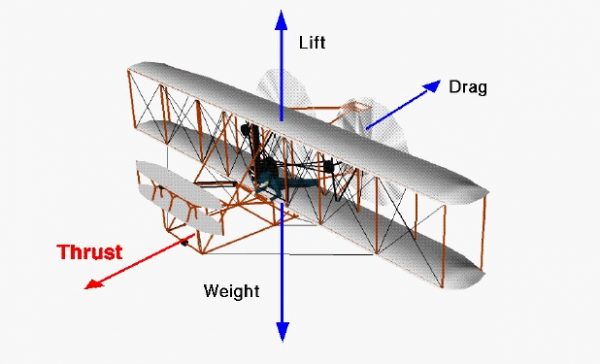Thrust

Thrust is the force which moves an aircraft through the air. For the 1903 Wright Flyer, thrust is generated by the propellers of the airplane. What is thrust?
Thrust is a mechanical force. It is generated most often through the application of Newton’s third law of motion. A mass of gas (air) is accelerated in one direction by the propulsion system, and the re-action is an acceleration of the aircraft in the opposite direction. On the Wright 1903 aircraft, the propeller does work on the surrounding air and as the air is accelerated to the rear, the propeller is pushed in the opposite direction. The push on the propeller produces a force on the aircraft. The aircraft response depends on the balance of forces on the airplane.
The physics involved in the generation of thrust is introduced in middle school and studied in some detail in high school and college. To turn the propeller, the Wright brothers built a small, internal combustion, gas engine. The gas engine burned fuel and used the energy released by the fuel as heat to turn a crankshaft. The crankshaft was connected to the propellers by drive chains. The modern propeller thrust equation describes how the acceleration of the air produces a force. The brothers developed their own propeller theory and used results from their wind tunnel to design their propellers.
You can view a short movie of “Orville and Wilbur Wright” discussing the thrust force and how it affected the flight of their aircraft. The movie file can be saved to your computer and viewed as a Podcast on your podcast player.
